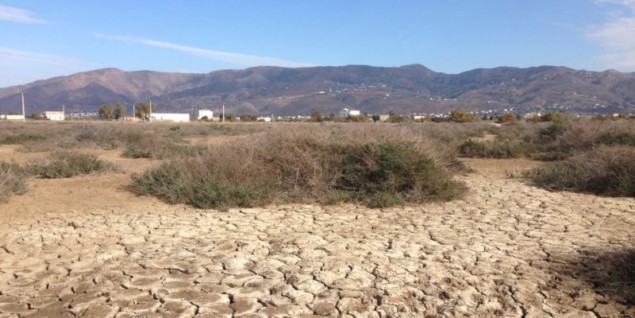
US researchers have confirmed that continued global warming means farmers face double trouble: a heightened possibility of a suddenly hungrier world, as ever-higher average global temperatures increase the probability of devastating heat and drought in two great agricultural regions of the world simultaneously.
This is not the first such warning. In October, a separate team of researchers used a different approach to find that continued climate change could increase the possibility of a return of the conditions that triggered the global drought and famine of 1875-78, which may have claimed 50 million lives.
Also in October, researchers at the University of Washington focused on the possible recurrence of three shifts in regional climate that combined to cause colossal harvest failure in India, China and Brazil.
This time, Californian scientists report in the journal Science Advances that they simply looked at the record of temperature change and the mathematical probabilities associated with it.
In the last century, thanks to profligate combustion of fossil fuels and the consequent increase of greenhouse gases in the atmosphere, the world has warmed on average by around 1°C.
“If it’s getting warmer everywhere, then it’s more likely to be hot in two places at once, and it’s probably also more likely to be hot when it’s also dry in two places at once,” said Noah Diffenbaugh, of Stanford’s school of earth, energy and environmental sciences.
“When we look in the historical data at the key crop and pasture regions, we find that before anthropogenic climate change, there were very low odds that any two regions would experience those really severe conditions simultaneously,” he said.
“The global marketplace provides a hedge against localised extremes, but we’re already seeing an erosion of that climate buffer as extremes have increased in response to global warming.”
For most of human history harvest failure has been a hazard, but losses in one region have usually been balanced by gains in another. The global famine that began with the Asian monsoon failure of 1875 was a rare event, made more damaging by imperial mismanagement by the European powers.
Lengthening odds
But climate change brings with it the double jeopardy of low crop yields in two great zones of agricultural production at the same time. The odds of both low rainfall and high temperatures in the same year in both China and India – two great farming nations, with the two biggest populations – were, in 1980, just one in 20. These have now increased to more than one in seven.
“So what used to be a rare occurrence can now be expected to occur with some regularity, and we have very strong evidence that global warming is the cause,” said Professor Diffenbaugh.
The researchers found that, if the world continued burning fossil fuels under the notorious business-as-usual scenario, the chances that average temperatures would rise well beyond the range normally experienced in the mid-20th century would, in many regions, increase by 75%.
The researchers also found that – were the world to honour the promise of the Paris Climate Accord of 2015, to contain global warming to well below 2°C by 2100 – the risk of double trouble for two separate regions simultaneously is curbed.
Extremes increase
Extremes of heat by themselves pose a risk to crop yields and, increasingly, more parts of the world are more at risk of harvest losses.
The Californian scientists looked at multiple risks in one region at the same time – high winds, storm surges, calamitous tropical cyclones, and also low humidity, high temperatures, high winds and lethal wild fires – and then the probability that similar or slightly different multiple hazards could overtake another region in the same year.
The implication is that with increasing average global temperatures, the kinds of hazards farmers and communities expect to confront could be about to change. For centuries, societies made decisions based on the probabilities they already understood.
“The default is to use historical probabilities,” said Professor Diffenbaugh. “But our research shows that assuming that those historical probabilities will continue into the future doesn’t accurately reflect the current or future risk.”
- This article first appeared at Climate News Network



